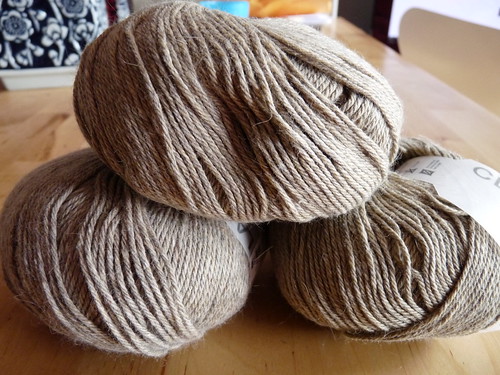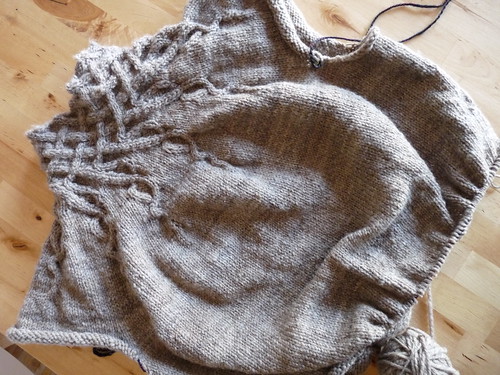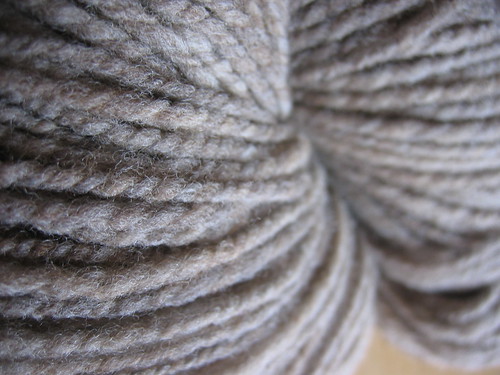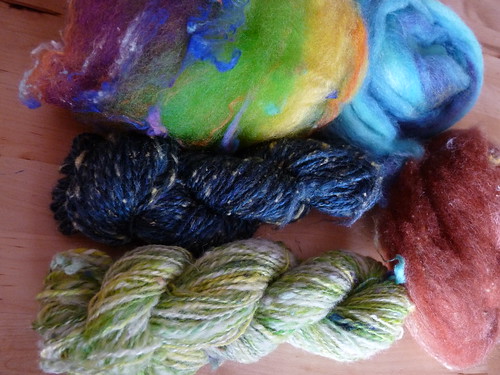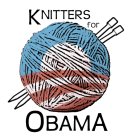I know! Lots of fleece washing stuff round these parts lately. I can't help myself though-- it's new and I'm sure the sheen will rub off eventually, but bear with me :)
A few weeks ago I was reading
anne's blog and she
talked about her use of the new fiber wash on the market by
Unicorn. She mentioned the fact they sell a
scour just for raw fleece... I couldn't help myself and contacted Unicorn, asking for a sample of their
Power Scour to put thru the paces. For honesty's sake, I did receive these at no cost but it hasn't affected my comparison in the least.

I wanted to compare it with the traditional "
original scent Ultra Concentrated blue Dawn"
I've been using and loving... and thought it was only fair to put them thru the same paces, only varying the detergent and heat used. Below is a step by step of how I wash small (1.5-2#) batches of fleece at home, in a sink with Dawn, to preserve lock formation. Nothing spectacular or new to many of yall-- but here we go :)
I'm starting with that amazing caramel colored
Cormo fleece purchased at the Monterey Wool Auction a few weeks back. I separate the locks out from the greasy fleece (while watching some sort of dirty secret tv)...
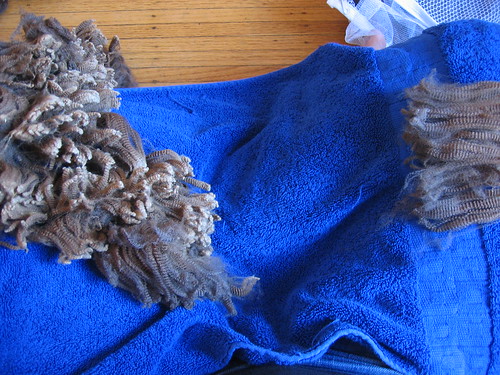
(the towel is supergreasy when i'm done!)
...arranging the locks so that the tips and butts (cut ends) are all in the same direction. Since I'm planning to comb this, I like to make sure the fiber flows in all one direction, plus I have noticed that when washing raw fleece, it's the butt ends that tend to mat/felt (knowing that and keeping them together makes me feel I can control matting more... on one side is better than both).
I generally let the locks guide me in how thick they are, but too large of a clump seems not to get clean so I'll separate most down to this thickness. I'm not going for
trying to keep all the locks the same length like before, these range from 3.5-4"+ (I am
keeping 3" locks, unscoured, separate here for another project.)
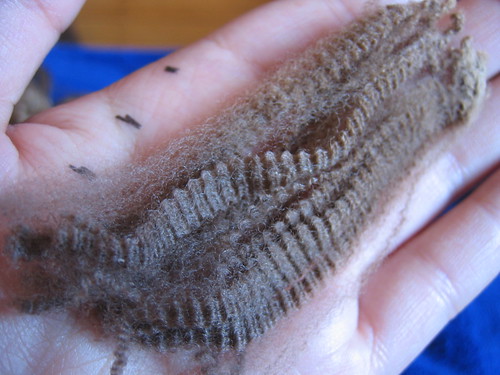
(the marks on my hand? quick ghetto ruler to estimate lock length. 3, 3.5 and 4". other applications un
flickrable ;))
Locks ready, I load them tip to butt in mesh lingerie bags. The Cormo tends to felt/mat at the cut ends more readily than others I've washed, so I try and keep the layers of locks not too thick (
the corriedale? I only used about 3 tuille sheets per bag since the locks didn't really want to felt. the cormo? closer to ten.) I layer about 3 rows and then lay on inexpensive bridal tuille (.99/yd), then add more layers.
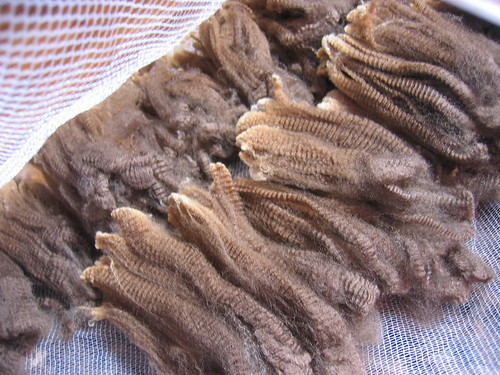
The tuille also helps in washing/rinsing-- by grabbing opposite sides of the bag and the tuille between it when removing the bags for draining/refilling, the locks don't shift in the bags since the tuille helps the bag and locks inside keep their shape-- staying in place helps keep them from matting and retaining the lock formation.
I stack layers in the bags just by eye and not necessarily weight-- I want the bags to be almost firm and hold their shape well. The weight per 14x21" mesh bag of raw fleece is approx. .75-1 pound, but what I really want is almost a medium firm pillow feel to the bag til I zip it up. If I've kept the locks not too thick, and am washing a covered fleece, I haven't had problems getting dirt out.
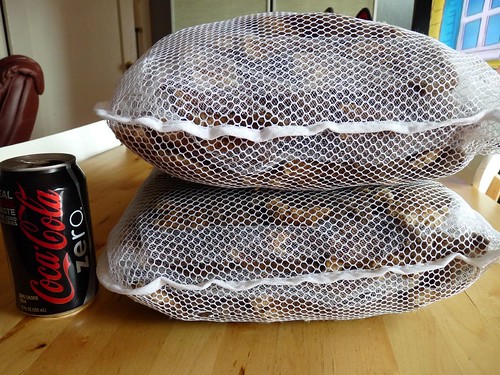
They'll lose a *lot* of loft once wet
I get two bags ready and head on off to the sink. I place the scouring-only stopper at the bottom...
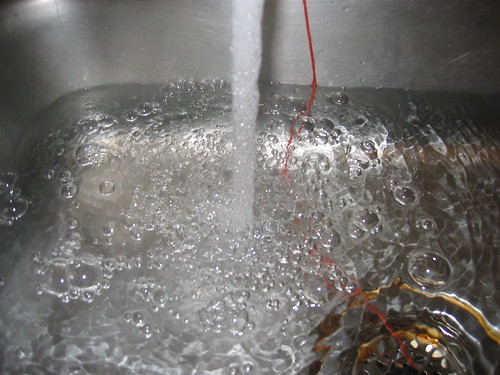
...to which I've tied a long length of brown sheep cotton fleece from the stash. This'll sit outside the water, so when it's time to drain I can just pull it instead of having to move the bags aside and try to get a good grip on the stopper. I fill the sink with the hottest water from the tap, plus
a stockpot (5 qt) full of near boiling water until the sink is just shy of an inch full of water. The fleece will not cause overflow if you go slowly :)
Then I eyeball the Dawn. I had no idea how much I used before... general wisdom was "several long squirts," "til the water is tinted blue..."
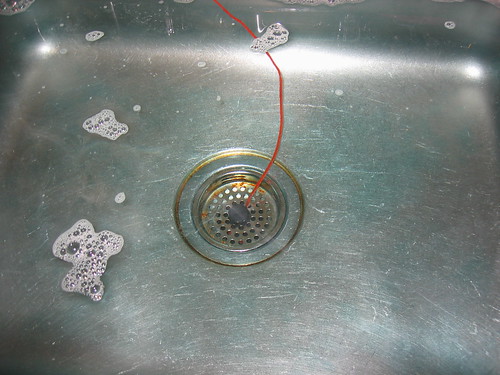
It's worked for me so far :)
This batch I went ahead and weighed the bottle of Dawn to get an idea exactly how much I've been using. Between three washes (
start,
one,
two,
three... each getting successively less Dawn), I used 362mL. (!!!) I had no idea it would have been that much!
To the very, very hot water with detergent I add my mesh bags full of fleece, and they
fit in the sink side by side, flush. Instead of using a gloved hand to push down the wool bags to get them submerged, I use a mesh plastic basket that is almost exactly the same dimensions as the lingerie bags.

One good, slow push down and letting them rise is as much as I do to cause water to flow thru the wool... my goal is to get the lanolin off; I'm not really dealing with lots of dirt (relative to an uncoated fleece) and I pick out almost all vm when bagging up before washing. I'm also concerned about felting, so I try and move the bags as little as possible-- one push with the basket versus at least two with a gloved hand to get the bag submerged.
There is a LOT of lanolin here. This is a picture of the first wash in Dawn. Can't even see thru the water to the bag beneath!
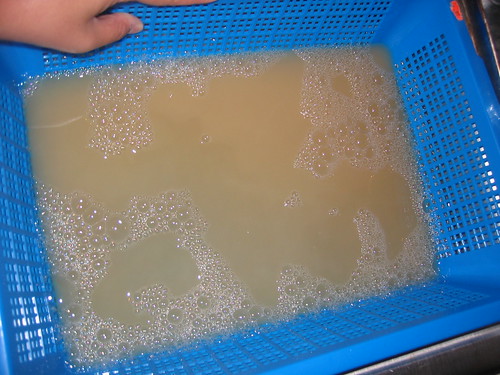
It'll get successively less til the water's clear. I wash with detergent for 15 minutes, drain the sink and most water from the bags, refill the sink for each wash, then repeat twice more. Most of the fleeces I've washed are super greasy, and I don't like leaving lanolin on at all (3x may be overkill, but I like the result.) The subsequent washings and even rinsings may have the bags balking at being submerged... there's a lot of detergent and bubbles trapped in the fleece. It'll go, but with a firm hand and slow movement. It's also my not too scientific method of figuring if the Dawn is completely out of the fleece... if the bags sink in the water with ease on your rinse like they do on your first submerging of dry wool, chances are the detergent and bubble buoyancy is gone.
After three washes I use the same superhot water to rinse-- three times in plain hothotwater. Sometimes I won't add near boiled water from the stove to the last 2 rinses. The rinses I let go for 20 min each, and the last one (of three) I add 15mL of kookaburra woolwash to the water. I like the smell and it doesn't have to be rinsed out-- it also is supposed to act as a moth deterrent and adds lanolin back to the wool.
After all that, drain, gently press bag in towels to remove excess water, and lay out on drying racks.
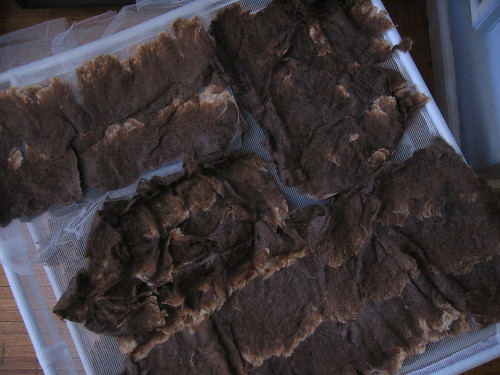
The wool just slides out of the bags on the mesh sheets, which I turn over and get "sheets" of clean, wet locks. (
Not jerky ;)) I can get a bag per drying rack-- this batch net 653g of clean, soft, lanolin-less locks (five times fast!) from 2 bags... about 2# of greasy wool to start with.
So, starting over with the Unicorn Power Scour-- I fill 2 mesh bags with the same Cormo, approx. 2# worth (860g). I then follow the Unicorn directions on their site for "
commercial and minimill washing." Now, I'm not one of those :) but they recommend this set of directions (as opposed to their "
washing raw fleece" directions) for extremely greasy wools like this one was.
Basically, the directions call for 140 degree water, an initial wash with Power Scour at 2-3% of the fiber weight and subsequent washes at 1-2% of raw wool weight. I filled my sink with the hottest water from the tap and measured its temp...
136 degrees. I could have heated water on the stove and topped it to 140 degrees, but part of the appeal of Unicorn to me that it has less impact environmentally since it uses less energy than traditional scouring methods so I went with the heat I could get.
I decided that since I wash 3x and rinse 3x with Dawn I'd do the same with Unicorn, so the
first wash used 26g (about 3% of wool weight). I figured by weight (thanks
AB), but I'm sure teaspoons/tablespoons would work as well.
The Unicorn Power Scour has this...
viscous quality to it. The pharmgeek in me is reminded of lidocaine rinse.
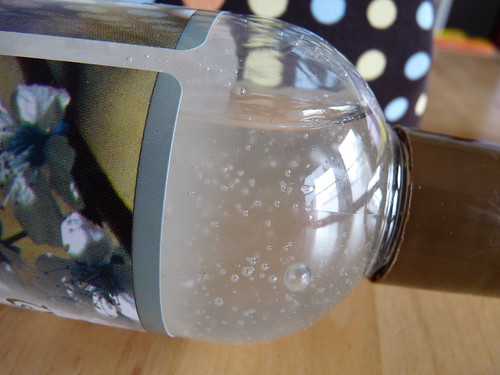
Instead of "melting" into the water and dispersing on its own like Dawn does,
it clings to itself (like hair conditioner in the bathtub does). I was able to easily break and mix it up with a wooden chopstick :) In doing so I noticed the UniScour has little sudsing action-- I have to be super gentle with the Dawn in order for a sinkful of bubbles to not appear, but with the UniScour it was easy to keep sudsing down. (cos of less product?)
The first wash actually looked quite a bit different than the first with Dawn-- the water didn't immediately cloud yellow like it does with Dawn (and the extra hot water) but instead started somewhat clear but with lots of dark, dark dirt coming off.
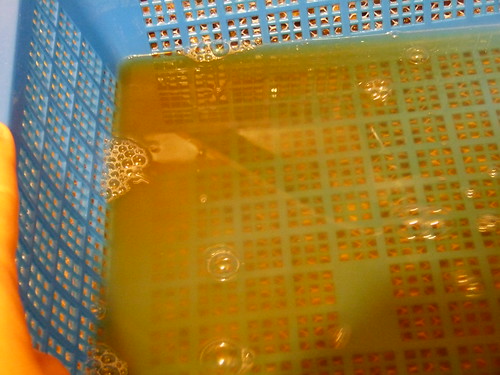
Later on in the first rinse the water turned lanolin yellow and in subsequent rinses the lanolin clouds appeared as they were lifted off of the fibers... I can't tell for certain if it was dirt that was being removed from the fibers in a way I hadn't seen before or not, but I think so.
After the first wash in 136ºF, the second wash was
2% UniScour (18g) and the third used
1% (8g) for a total of 52g. I then used the same 136ºF water from the tap to rinse the wool in, twice with plain hot water and the third and last time with 15g of Unicorn Fibre Rinse in the water.
Laid out to dry...
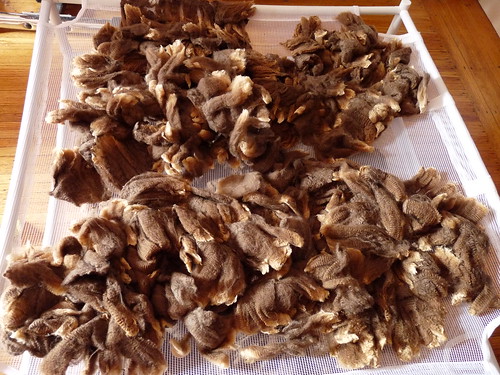
So... the difference?
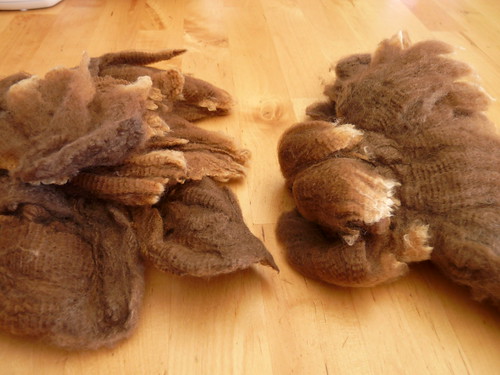
Dawn on left, UniScour on right
There isn't really one, not that I'd expect there to be :) Like I've said before, I've been really pleased with the result of original blue Dawn, and the results of the Unicorn are similar. Clean wool, lanolin and dirt wise for both.
On a handful of the UniScoured locks (out of the 1.5 clean pounds) I did notice a slight... draggy feeling on a few locks. I don't think it was lanolin, more like something left behind from the detergent or the Fibre Rinse maybe? It really wasn't noticeable til I really started going over the wool very carefully and isn't something where I'll rewash it-- it's not that lanolin tack that I just really don't like during spinning. I want to say it was the Rinse, but
Clara Parkes of Knitter's Review
loved the Fibre Rinse and I'd trust her judgement further than I can throw myself :) I don't know-- I don't consider this a drawback, more likely my error in not dispersing the rinse evenly thru the water prior to submerging the bags for the final rinse, but wanted to share it.
The point of it all is to see if Unicorn Power Scour can clean wool as effectively as Dawn can, with less energy/heat and less product-- and yes, it can :) I can't tell the locks apart when side by side either by touch or feel.
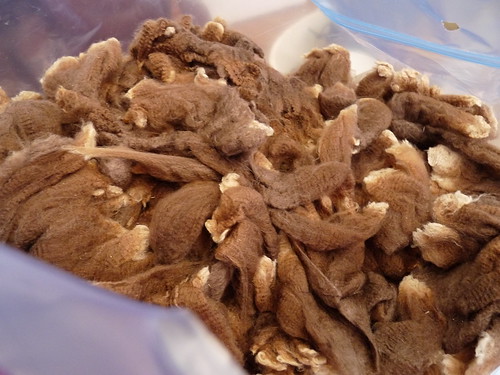
mishmash of dawn and uniscour washed locks
The only real difference is the smell-- to me, wool that smells "clean" smells like blue Dawn. (So much so I only use it for fleece washing; dishwashing with it is a little weird!) I like that particular smell a lot,
I sniff wool too ;) Unicorn Power Scour has a clean smell, but not that clean smell many of us are used to in our specialty woolwashing aids like Soak, Kookaburra, Eucalan... no lavender, no florals or sharp citrus, no tea tree (my fav). I can't place the smell or describe it, definitely clean but not the lingering boutiquish smell of major brand woolwashes. It pretty much rinses out with the last rinses as well (notwithstanding my use of Fiber Rinse-- that smells like Ivory to me, that type of clean)... in any case, not a perfume but just a clean smell.
One last fiber washing plus... less heat generally means less propensity to felt. I didn't have any problem with either lot in felting (knock on wood!), but being able to use a less hot waterbath probably would translate to a better chance in not felting your beautiful fleeces on accident.
From an economy standpoint, a
28 oz bottle of Dawn at my local drugstore is $4.29, so for my use of 362mL the cost per 2# of raw fleece would be approx. $1.85. I always finish the Dawn up with 15mL of Kookaburra woolwash, just for the scent and 'finish' it gives... 36 cents :) There is also the cost of heating the water-- I have no idea how to wrap around the cost of heating 5qts of water 6x to nearboiling, but there is some cost there, however minor.
eta, 9/26:
Sarah has blown my mind on figuring this cost! Her comment:
"Prepare for ME to geek out, using my awesome engineering superpowers:An estimate of the energy required to heat a volume of water = 4186 J/kg°C x weight x change in temperature (since you say, "near boiling", we thankfully don't have to think to hard about state changes)5 quarts of water weighs about 4.7 kilogramsthe change in temperature is the difference between hot tap water (say 57°C) to just below boiling(100°C), or 43°C.That means your energy consumption is 845,990 Joules to heat one pot of water, or 5,075,943 Joules to heat 6 pots. You're charged by the kilowatt-hour, and that many Joules is about 1.5 kilowatt-hours. The average cost of electricity in the US is about 11 cents per KWh, so heating this much water costs you 16 cents!(Ok, this is hugely simplified, as your stove isn't perfectly efficient, and you also lose some energy to steam, so add an "engineering safety factor" and call it 32 cents)"RAD!!! Thanks Sarah, I loveLOVE stuff like this.The 16 oz bottle of
Unicorn Power Scour is $15.75, so for the 52mL it took to wash 2# of unwashed fleece the cost would be approx. $1.73. The 15mL of
Unicorn Fibre Rinse would be approx (a whopping) 35 cents.
It seems silly to break the costs down like this, but it's not just the fact the two are similar pricewise that makes the UniScour stand out... I honestly had no idea how much Dawn I was using, and am shocked that I could use
eighty five percent less product by weight when using the Unicorn, as well as less energy when doing so in not having to top off the sink with water from the stovetop. Packaging is also obvious-- I'd use what, almost 6 bottles of Dawn to one of Unicorn? Of course I usually buy a larger bottle of Dawn but there's also a large gallon size of UniScour, too :) Now, I may be using WAY more Dawn than necessary... but it is a fair example of how I've washed all the wool before and had excellent results. (Just wanted you to know 85% seems like an outrageous # to me, too ;))
In any case-- approx 2# of greasy wool taking 52g means you could wash about 18# of the same from one 16 oz bottle of Unicorn Power Scour. That's a LOT... especially when you consider you could probably get more washes if your wool wasn't as fine and greasy as the Cormo was (something that needed only two washes or needed less detergent, etc.) Even the
sample size Unicorn offers for sale (4 oz) would wash 4.5# of fleece... a good way to sample without jumping in feetfirst.
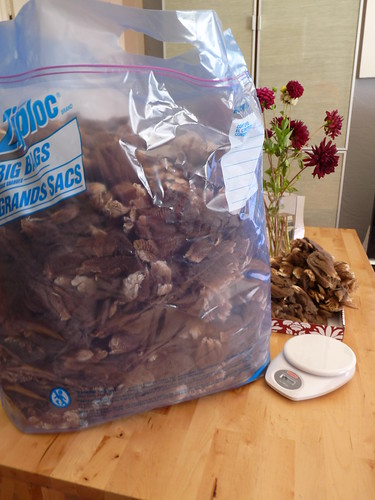
(this is about 4 pounds of clean wool in locks.)
So what am I going to do? Well, I have a lot of blue Dawn stockpiled, but I'll definitely be using the Unicorn Power Scour again as well. For me, I'll finish my fleece in
kookaburra wash but that's just because I really, really like that sharp tea tree smell (no offense,
Fibre Rinse! you'll get a turn on some handknits soon enough!)-- but if you're looking for an efficient way to wash raw fleece that is also environmentally friendly *without* the usual financial premium, I'd definitely give UniScour a try.
For even more on UniScour,
The Independent Stitch also has a
review on using Power Scour for smaller woolwashing lots (as well as a
cool scouring method with kitty litter pans!)
...and I swear, this is the last fleece washing thing for a while!! :)


